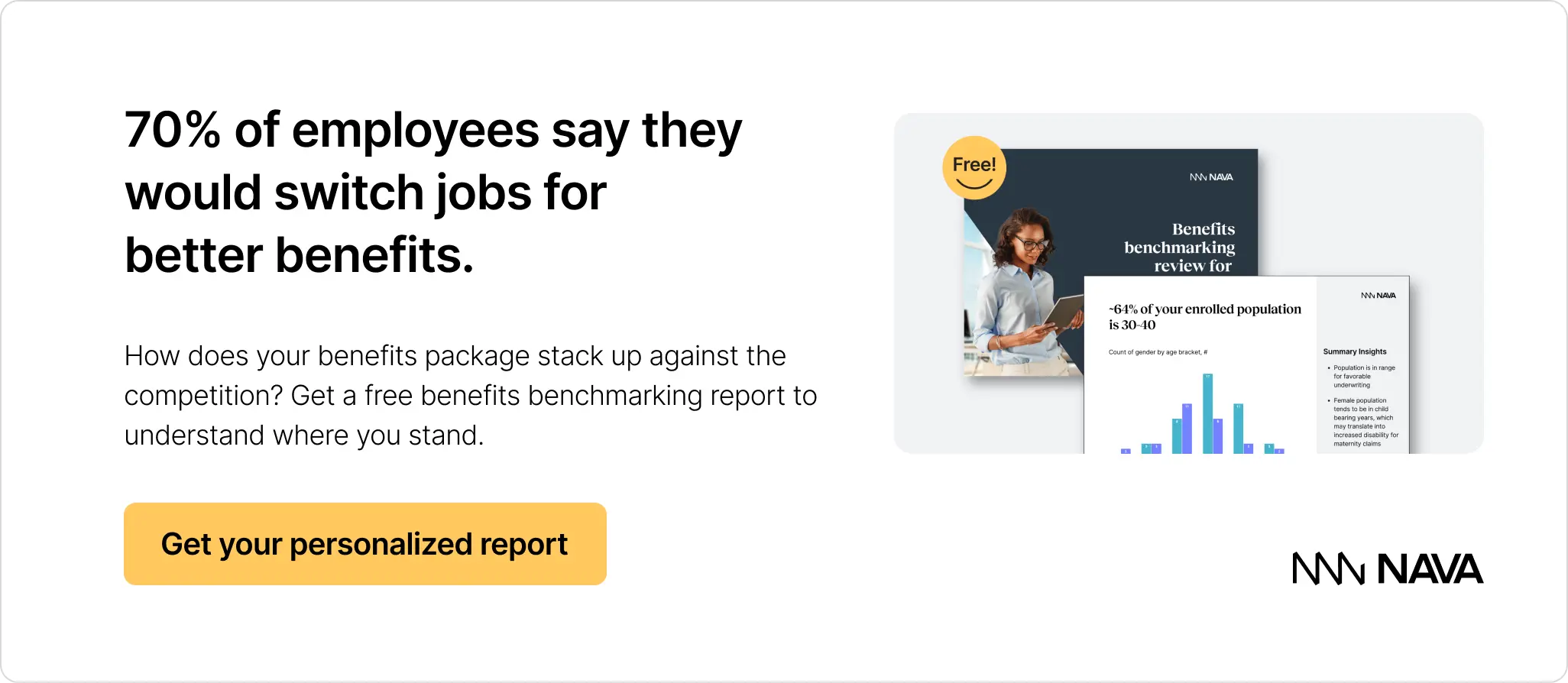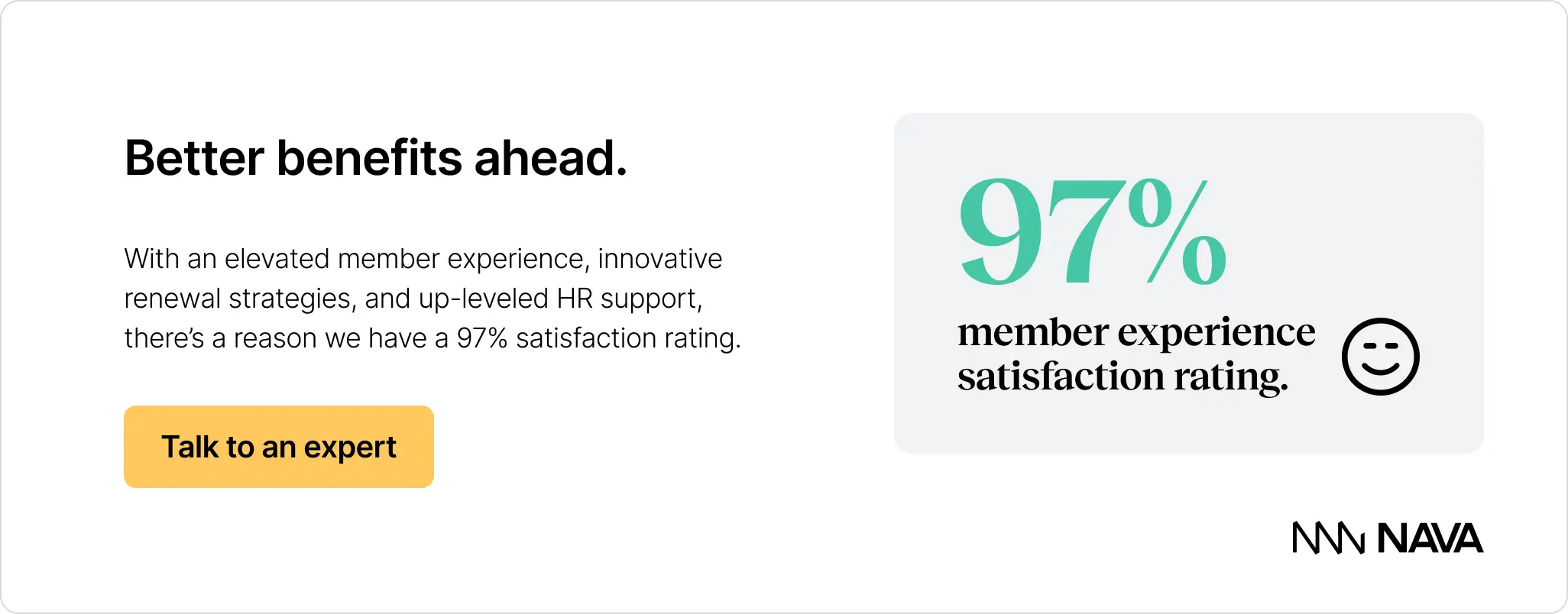Values-driven employee benefits: a how-to guide with 13 inspiring examples

This guide breaks down what values-driven employee benefits are, why they matter, and how to design them so they align with your company’s mission and culture. You’ll learn practical steps to create benefits that attract and retain talent, avoid common pitfalls, and reinforce your values. Plus, we spotlight 13 companies, from Amazon to Commonwealth Bank, showing exactly how to put these benefits into action, with inspiring examples across professional development, family support, sustainability, community impact, wellness, and inclusion.
In 2025, HR leaders face a paradox: budgets are tighter than ever, yet expectations for benefits have never been higher. Research shows that 6 in 10 employees are more likely to move to (or stay with) companies whose values align with their own. That means benefits can no longer be just competitive checkboxes; they must reflect an organization’s mission, culture, and purpose.
Done right, these benefits are more than just perks. They’re powerful tools for attracting and retaining talent, building culture, and strengthening your employer brand. Done poorly, they can feel performative or even alienate employees. Here’s how to get it right.
What are values-driven employee benefits?
Values-driven benefits are perks intentionally created to align with and reinforce your company’s core values.
Unlike market-driven employee benefits, which are designed to match competitors or meet compliance requirements, values-driven benefits serve as a tangible extension of your organization’s purpose. For example:
- If a company values innovation, it might fund professional development and certifications.
- If it values community impact, it might offer paid volunteer time.
- If it values sustainability, it might embed eco-conscious practices into everyday work life.
These benefits act as daily reminders of what your organization stands for.
How are values-driven benefits good for business?
When benefits are built around your organization’s core values, they do more than fill a page in the employee handbook. They become a strategic lever for business success. Values-driven perks resonate on a personal level, strengthen workplace culture, and create a competitive edge that’s hard to replicate. Here’s how aligning benefits with your mission translates into measurable business impact:
- Talent attraction & retention: Candidates are more likely to join (and stay with) companies whose benefits reflect their personal values.
- Culture reinforcement: Benefits serve as a lived expression of what’s written on your website or office wall.
- Higher engagement: Employees are more likely to use benefits that genuinely align with their needs and beliefs.
- Long-term ROI: Strategic alignment improves retention, reduces turnover costs, and builds loyalty.
Are there any downsides to values-driven benefits?
While values-driven benefits can be a powerful way to engage employees and strengthen culture, they are not without potential pitfalls. Without careful planning, these programs can create unintended gaps, cause perceptions of favoritism, or strain budgets.
- Perception gaps: If benefits feel like a PR move instead of authentic support, they can backfire.
- Equity risks: Over-indexing on one value (like parenthood) can unintentionally exclude others.
- Budget challenges: Customizing benefits can be costly without careful design.
- Scalability issues: Benefits must evolve as your workforce grows or diversifies.
The key is finding the right balance, creating a benefits portfolio that stays true to your values while serving the full spectrum of employee needs and delivering measurable business value.

Which companies are setting the tone for values-driven employee benefits?
Across industries, some organizations are redefining what it means to align perks with purpose. These employers are not only offering competitive benefits, they’re intentionally designing programs that reflect and reinforce their core values. From investing in lifelong learning to championing sustainability, here’s how leading companies are putting their beliefs into practice through benefits that matter.
Professional development & lifelong learning
Amazon: Guided by the leadership principle “Learn and Be Curious,” Amazon’s Career Choice program prepays 95% of tuition for high-demand career paths. This benefit demonstrates a deep commitment to employee growth and skill-building, even if it means preparing workers for roles outside of Amazon.
3M: Rooted in the value of "curiosity," 3M’s famed “15% time” policy empowers employees to spend a portion of their paid work time pursuing projects of their own design. This initiative reinforces 3M’s belief in continuous creativity and discovery. It’s where groundbreaking ideas like the Post-it Note were born.
Supporting parents & families
Bobbie: Founded with a mission to support parents and babies, Bobbie offers up to one year of parental leave (four months paid), health coverage for the year, flexible return-to-work hours, a free year-long formula subscription, and breastmilk shipping for traveling parents. Every benefit directly mirrors their core purpose of helping parents thrive, not just survive.
Netflix: Built on a value of “Freedom and Responsibility,” the Netflix parental leave policy is: “take care of your child and yourself.” The policy trusts employees to balance work and family without rigid limits, reflecting the autonomy embedded in their culture.
Cakes Body: Recognizing the financial burden of childcare, Cakes offers up to $36,000 annually per full‑time employee for childcare support. Used by 20% of the team, this benefit, along with paid holiday leave and flexible re-entry options, reflects the company's value of removing barriers for working parents and fostering inclusion.
Sustainability
Lush: With a mission of “Leaving the world lusher than we found it,” Lush provides paid volunteer time for environmental causes, integrates sustainability training into onboarding, and encourages staff to participate in activism aligned with the brand’s eco-values.
Clif Bar: Demonstrating deep commitment to sustainability, Clif Bar offers employee-friendly "Cool Commute" incentives, including up to $500 to purchase a commuter bike and incentives for commuting by foot, bike, or public transit. This approach reflects their belief in environmental responsibility, encouraging eco-conscious commuting as a core company value.
Community impact
Salesforce: The Ohana Culture centers on family, trust, and community. Employees receive seven days of paid volunteer time and the company donates 1% of equity, product, and time to nonprofits, embedding community service into the fabric of work life.
Bell Bank: Reflecting its value of “Happy employees, happy customers,” Bell Bank runs a Pay It Forward initiative. Each full‑time employee receives $1,000 annually to donate to causes of their choosing. Since the program began 17 years ago, employees have contributed over $30 million to community causes.
Holistic wellness
Intuit: Guided by its mission to power prosperity around the world, Intuit integrates financial wellness directly into its employee benefits through its Prosperity Hub initiative and partnership with SaverLife Solutions. Employees can participate in a matched savings program designed to help them build emergency funds and achieve long-term financial wellness.
Nava Benefits: That’s us! We offer a quarterly wellness stipend to all employees that they can use on anything that supports their holistic well-being. Our mission is to #fixhealthcare, and this is one way we put that mission intro practice internally. We know that wellness looks different for everyone and often extends beyond what’s “covered by insurance.” This stipend gives our team the flexibility to invest in what truly supports their health and happiness on their terms.
Equity & inclusion
Commonwealth Bank: Committed to “Inclusive Growth,” they provide leave for gender affirmation, menopause, and even pet care, ensuring benefits meet the diverse life experiences of their workforce.
Apple: Guided by its values of inclusion, respect, and community, Apple offers comprehensive family-building benefits that are designed to support all employees, regardless of gender or family structure. This includes full coverage for egg freezing, adoption assistance, and other pathways to parenthood.
Steps to create a values-driven benefits strategy
- Clarify your core values: Ensure leadership agrees on the values that define your culture.
- Audit existing benefits: Identify which perks already align (and which don’t).
- Listen to your employees: Use surveys, employee resource groups (ERGs), and focus groups to uncover needs.
- Prioritize high-impact benefits: Focus resources where they’ll make the most difference for employees and culture.
- Pilot before scaling: Test, measure, and adjust.
- Communicate the “why”: Connect every benefit directly back to a value in your internal messaging.
Key partners for building a values-driven benefits strategy
- HR & total rewards teams: To align benefits with your talent strategy
- Finance: For budgeting and ROI measurement
- DEI leaders: To ensure inclusivity across all employee segments
- Employee Resource Groups (ERGs): For real-time insight into diverse needs
- Marketing & comms: To tell the benefits story internally and externally
- Your benefits broker (like Nava): To bring market insights, cost containment strategies, and innovative tools to the table
Values-driven benefits aren’t fluff. They’re strategy in action. They’re the clearest way to show employees (and candidates) what you stand for, while creating a culture that’s hard to walk away from.
If you’re ready to align your benefits with your values without breaking your budget, Nava can help you design a package that’s creative, cost-conscious, and culturally on point.





.webp)

.png)